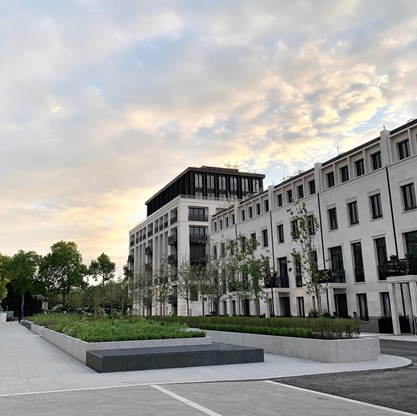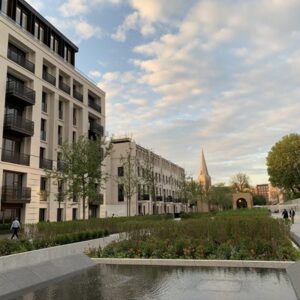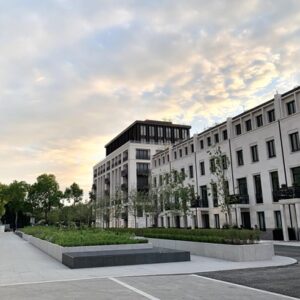
What kind of spatial designer am I? #1 Christopher Hartiss, Architect.
Studying Interior Design, Spatial Design, Interior Architecture – or any kind of design of the built environment – can lead to many different careers. In this series of blog posts we look at the experience and careers of different design professionals and find out what inspired them to study in the first place.

We’re starting with Christopher Hartiss, an architect who was formerly director at Squire & Partners, and Head of Design at Canary Wharf Group plc.. Chris also teaches architecture and mentors young people studying and starting out in their spatial design careers.
CB: What first inspired you to practice spatial design?
CH: As a small child I was fascinated by architectural drawings and their power to convey instructions, feelings and a sense of the place or environment they describe. I was drawn to the abstraction of space and sensation through drawing and it triggered a life-long interest in the translation of ideas into drawings and, in turn, drawings into physical environments.
CB: What training and/or experience have you had?
CH: I was never a shining star academically so before I went to university I worked in an architect’s office making tea and printing drawings. This helped me decide whether to go to college and I decided to go to Huddersfield for my degree. After finishing that I couldn’t get a job in practice due to the recession so I moved back home and got a job on a building site. This was an amazing experience because I was given drawings and asked to set structures out on a building site. After having previously been fascinated by drawing drawings I was suddenly faced with having to read them – it was great experience. After that I moved to London and completed my architectural studies at South Bank University.
CB: What is your favourite film?
CH: It’s a very, very short film because it’s a music video. The video for The Cure’s ‘Close To Me’ matches the mood of the obsessive and suffocating song perfectly and is a brilliant study in spatial dynamics and claustrophobia which have always interested me as a spatial designer.
CB: What is the most exciting interior or exterior space you have created?
CH: I am incredibly proud of my work on the Chelsea Barracks project where I started with a blank piece of paper and a large, prominent piece of land in Central London. I saw the project through to completion of the first phase and am very proud to walk around the new streets I helped to create.
CB: What is your favourite material to work with?
CH: Probably timber because it does so much. It can be a beautiful, smooth finish and it can be a rough and ready structural element. There is so much variety to it and it seems to have infinite flexibility.
CB: Sketching, doodling, modelling or research – where do you start?
CH: I often start with research and some doodling. Most projects are different though so sometimes it’s best to start with a sketch or a model.
CB: What is your go-to initial designing tool (pen, pencil, model making, digi visualisation)?
CH: I personally prefer pen and paper to start with generally but I find it really exciting to challenge that sometimes and just try to make a model without having first done any doodling.
CB: Do you have an all-time favourite building?
CH: I have always been interested in the Case Study House programme in Los Angeles which started in the 1950s as a pilot scheme to design model houses for returning soldiers. The programme quickly turned into a way to design beautiful houses for beautiful people in a beautiful part of the world and I was really attracted to the glamorous and fantasy life the houses suggest. My favourite of all of them is the much-photographed and iconic Case Study House 22.
CB: What one thing would you say to yourself as a young spatial designer starting out?
CH: I have been very fortunate to have had the kind of long and successful career that I never imagined a lazy boy who liked pop music would ever have. Somewhere along the way I developed some ambition but I never thought that it was that important. What I know was important – and it still is – is that every designer needs to be themselves because every designer is a person who has a unique perspective. Every designer has this within themselves and the key is to allow this to come out in its own time and to celebrate it. Be proud of who you are and what you do!
CB: What would you have liked to have known before you started?
CH: Probably that it would all be ok in the end and that it was going to take as long as it took. It was my path – not anyone else’s – and for that reason it would never have been the same as anyone else’s path. I’m now extremely grateful for that but when I was younger I worried too much.
If you’d like to hear more from Chris you can listen to his podcast on ArchitectureSocial here: Christopher Hartiss – Architecture Social

|
|






